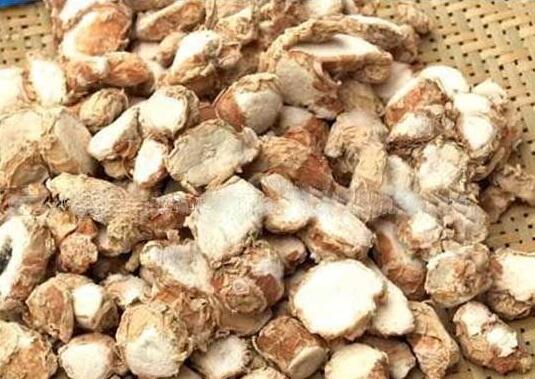Distribution:
Southeast Asia and southern parts of China.
Properties (characteristics):
Acrid, warm.
Channels (meridians) entered:
Stomach
Medical functions:
The active ingredient kaempferol:
antibiotic effect: inhibits Staphylococcus aureus, Pseudomonas aeruginosa, Salmonella typhi, Lactobacillus sp
antifungus: Candida Albicans
inhibits aldose reductase of eyes thus helps the treatment of the cataract of diabetic patients.
arrest cough; for treatment of bronchitis
antimutagenic properties:at concentration of 1×10-4mol/L, it inhibits the production of lymphatic cells.
anti-inflammatory effect by inhibiting the production of nitric oxide

Actions & Indications:
Chest and abdomen paint, dysentery, tooth cavity and ache. Also use as spice in cooking.
Today it is being used in anti cancer, anti-pregnancy, anti epilepsy, anti inflammation, anti spasm, anti ulcer, promoting bile secretion, as diuretics, arresting cough.
Chemical ingredients:
The rhizome is also reported to display cytotoxic properties. (Chem. Pharm. Bull., 33, 3565, 1985). In the rhizomes of a related species, K. rotunda, a number of "cyclohexane diepoxides" (diepoxides of cyclohexa-1,3-diene) were found (Phytochemistry, 43, 305, 1996)2.5 to 4% essential oil:
ethyl cinnamate (25%)
ethyl-p-methoxycinnamate (30%)
p-methoxycinnamic acid
3-carene-5-one
Borneol
Camphene
Carene-3
p-methoxystyrene
Kaempferol
Kaempferide
Dosage:
10 to 20 g. Concentrated extract: 0.5 to 2 g.
Cautions:
Not to use in case of yin deficient with yu huo in stomach.

![Diseases, Symptoms, tcm, [tcmwindow.com]](/uploadFile/adImg/2015/11/11/f5cbfcc0-4df5-4646-9b9a-f316651a0199.jpg)





